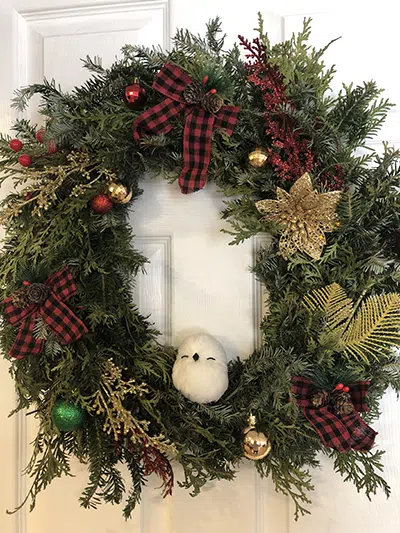Have you noticed raccoons nesting on your property? These masked bandits may be cute, but they cause a lot of property damage, make a lot of noise, and can be destructive and dangerous to household pets and children.
Your best option is to remove them from your property before the situation gets worse. That said, Ontario laws prohibit trapping and relocating raccoons in the province without a proper license. Chances are you do not have a license. For this reason alone, you should not attempt to trap a raccoon yourself. In addition, trapping can be a risky endeavour, and in many cases, serious injuries can occur.
Keep reading to learn why you need to hire a professional trapper for your sake and the sake of the animal.
What Is Trapping?
Trapping is the process of capturing an animal with use of a device such as a cage, box, or specially designed catch tool. The action of trapping an animal is performed for the fur trade, for food, for pest control, or even as a management method for controlling wildlife.
Federal and provincial laws prohibit anyone from setting a trap due to safety reasons, for both the trapper and the animal. The various tools used to capture an animal can maim or kill an animal if not used properly. Uncontrolled and hidden traps can also be dangerous for household pets and humans.
How Is Trapping Regulated?
Trappers for raccoon removal and other animals must apply and successfully receive a trapping license. For example, a fur trapper has a license that specifically dictates the area where he/she/they are allowed to set their traps and a quota limit.
Each wildlife species has a “open season” and designated area where official management has recorded a high number of the animal existing.
In Ontario, a trapper must hold a designated trapping license and have completed the Fur Harvest, Fur Management, and Conservation course. The regulations call for trapping during open seasons, on a specific parcel(s) of land, written permission from the landowner, and use of only humane traps certified by the Humane Trap Development Committee (HTDC) and the Fish and Wildlife Conservation Act.
What Type of Traps Does Hawkeye Use for Live Trapping?
At Hawkeye Bird and Animal Control, we use only cage traps for live trapping. There are various types of traps used by companies and individuals to trap specific wildlife. The two common traps used are box traps and cage traps.
Hawkeye chooses to use cage traps as box traps limit ventilation due to a completely closed interior once the trap has been latched. The box trap is considered a humane trap during the colder months as it prevents the animal from being exposed to environmental elements. During the warmer months, it can be fatal.
The cage traps are suitable for raccoons, skunks, opossums, and squirrels. This type of trap provides regular airflow and protection from the weather.
Why Should I Hire a Professional to Set Raccoon Traps?
A professional trapper is regulated by law to perform raccoon control through wildlife management techniques. This, and several other important aspects, are prime examples as to why a professional is needed to set a raccoon trap.
To Avoid Injuries
Raccoons are defensive and will attack when provoked. Scratching and biting are a raccoon’s internal defence mechanism. Furthermore, anyone in contact with a raccoon (whether bitten or scratched) will need to have a rabies shot as this disease can be fatal. A professional trapper has the equipment and knowledge about managing raccoons and safely trapping them.
To Place Trap in Proper Location
Contrary to popular belief, you can’t just set a trap in a raccoon-infested area and voila! Problem solved! Aside from the legalities, only a professional trapper understands the precise movement and habits of raccoons. They will be able to know the right location to place the trap. In some cases, a raccoon will evade the trap that has been set and the trapper will know what the next step should be.
There Are Strict Laws Against Trapping
Ontario has strict laws in trapping wildlife and for relocation. Animals that have been trapped must be relocated within 1 km of where they were captured. A professional trapper is licensed by the province to perform adequate trapping management and, if necessary, can permanently remove the raccoon from your property.
A Professional Guarantees Permanent Raccoon Removal
Hiring an inexperienced team of professionals for raccoon removal services can see the raccoon returning, usually with others in tow for refuge in your yard. If the raccoon found tasty treats and a warm place to hide before being trapped, he/she will often return, especially if they have kits on your property. A professional trapper knows this and will take precautionary steps to ensure the raccoon does not return to the scene of the crime.
Why Should I Hire Hawkeye to Trap Raccoons in Toronto and the Greater Toronto Area?
With decades of experience handling and managing wildlife, the professional team at Hawkeye Bird and Animal Control has the resources and knowledge of pest animals, such as raccoons. Unlike other wildlife control services in the GTA, Hawkeye holds the following licenses: Trapping of Fur Bearing Animals License, Falconry Permit, and Pest Control License. This allows us to employ control methods in addition to relocation of captured raccoons.
Email us at [email protected] or call us at (416) 429-5393 or toll-free at 1-(855) 393-4295 to learn more about our professional trapping services.
Related Articles:Preventative raccoon control and how Hawkeye can help protect your property















